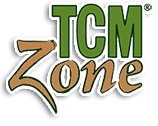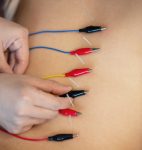Navigating Complex Pain Syndromes with TCM: Advanced Acupuncture Strategies and Pain Management Protocols
By Xiyuan “Alex” Qiu, L.Ac.
Pain management is a complex and multifaceted aspect of healthcare, often requiring a comprehensive approach that addresses both the underlying causes and the subjective experience of pain. Traditional Chinese Medicine (TCM) offers a rich array of acupuncture strategies and herbal protocols for managing pain syndromes, including those that are particularly intricate and challenging. In this advanced guide, we explore innovative acupuncture techniques and herbal formulas that have proven effective in navigating complex pain syndromes, providing valuable insights for advanced practitioners.
Understanding Complex Pain Syndromes
Complex pain syndromes encompass a wide range of conditions characterized by persistent or recurrent pain that may be accompanied by other sensory, motor, or autonomic symptoms. These syndromes often involve multiple contributing factors, including tissue damage, inflammation, neurological dysfunction, and psychosocial factors. Examples of complex pain syndromes include fibromyalgia, neuropathic pain, complex regional pain syndrome (CRPS), and temporomandibular joint disorder (TMJ).
Advanced Acupuncture Strategies for Complex Pain Syndromes
- Segmental Acupuncture: Segmental acupuncture targets specific dermatomes or myotomes corresponding to the affected area of pain. By stimulating acupuncture points along the corresponding spinal segments, practitioners can modulate pain signals and restore balance to the affected region (Langevin et al., 2011).
- Trigger Point Acupuncture: Trigger point acupuncture focuses on identifying and needling tender points or trigger points within muscles and fascia. These points are often associated with myofascial pain syndromes and can be effectively treated with acupuncture to release tension, reduce pain, and improve range of motion (Cagnie et al., 2015).
-
Electroacupuncture: Electroacupuncture involves applying electrical stimulation to acupuncture needles to enhance the therapeutic effects of treatment. This technique is often used in the management of neuropathic pain and other chronic pain conditions, with studies demonstrating its ability to modulate pain perception and promote healing (Zhang et al., 2014).
- Distal Acupuncture: Distal acupuncture involves needling acupuncture points that are distant from the site of pain, typically on the limbs or opposite side of the body. This approach is based on the principle of meridian theory and can be particularly effective for treating chronic pain conditions by regulating the flow of qi and blood throughout the body (Cheng, 2000).
Herbal Formulas for Complex Pain Syndromes
- Ma Huang Tang (Ephedra Decoction): This classic formula, consisting of Ephedra (Ma Huang), Cinnamon Twig (Gui Zhi), and Apricot Kernel (Xing Ren), is traditionally used to dispel wind-cold-dampness and alleviate pain. It is commonly prescribed for conditions such as fibromyalgia and rheumatoid arthritis, where there is a prominent component of cold-dampness stagnation (Bensky et al., 2015).
- Shu Jing Huo Xue Tang (Relax the Channels and Invigorate the Blood Decoction): This formula, containing herbs such as Chuan Xiong (Ligusticum), Dang Gui (Chinese Angelica), and Yan Hu Suo (Corydalis), is indicated for conditions characterized by blood stasis and qi stagnation, such as neuropathic pain and CRPS. It works to promote the circulation of qi and blood, relieve pain, and resolve stagnation in the channels (Bensky et al., 2015).
- Gui Zhi Fu Ling Wan (Cinnamon Twig and Poria Pill): This formula, comprising Cinnamon Twig (Gui Zhi), Poria (Fu Ling), and Persica Seed (Tao Ren), is commonly used to regulate the flow of qi and blood, resolve blood stasis, and alleviate pain. It is often prescribed for conditions such as endometriosis and pelvic inflammatory disease, where there is a prominent component of blood stasis and dampness (Bensky et al., 2015).
Case Studies: Applying Advanced Techniques in Clinical Practice
Case Study 1: Fibromyalgia
A patient presents with widespread musculoskeletal pain, fatigue, and sleep disturbances consistent with fibromyalgia. The practitioner employs a combination of trigger point acupuncture, distal acupuncture, and electroacupuncture to address the underlying imbalances of qi and blood stagnation. Herbal formulas such as Ma Huang Tang and Shu Jing Huo Xue Tang are prescribed to alleviate pain and promote relaxation.
Case Study 2: Neuropathic Pain
A patient with diabetic neuropathy experiences burning pain and numbness in the lower extremities. The practitioner utilizes segmental acupuncture targeting the corresponding dermatomes, supplemented by electroacupuncture to stimulate nerve regeneration and modulate pain perception. Herbal formulas such as Shu Jing Huo Xue Tang and Gui Zhi Fu Ling Wan are prescribed to invigorate blood circulation and relieve neuropathic symptoms.
Conclusion: Advancing Pain Management with TCM
In conclusion, navigating complex pain syndromes requires a multifaceted approach that addresses the underlying mechanisms of pain while also addressing the individual needs and preferences of each patient. Advanced practitioners of acupuncture and herbal medicine play a crucial role in developing innovative strategies that combine ancient wisdom with modern science to provide effective pain relief and improve quality of life for patients with complex pain syndromes.
**References:**
– Bensky, D., Clavey, S., & Stoger, E. (2015). Chinese Herbal Medicine: Materia Medica (3rd ed.). Eastland Press.
– Cagnie, B., Castelein, B., Pollie, F., Steelant, L., Verhoeyen, H., & Cools, A. (2015). Evidence for the Use of Ischemic Compression and Dry Needling in the Management of Trigger Points of the Upper Trapezius in Patients with Neck Pain: A Systematic Review. American Journal of Physical Medicine & Rehabilitation, 94(7), 573–583.
– Cheng, X. (2000). Chinese Acupuncture and Moxibustion (3rd ed.). Foreign Languages Press.
– Langevin, H. M., Churchill, D. L., & Cipolla, M. J. (2001). Mechanical Signaling Through Connective Tissue: A Mechanism for the Therapeutic Effect of Acupuncture. The FASEB Journal, 15(12), 2275–2282.
– Zhang, R., Lao, L., Ren, K., & Berman, B. M. (2014). Mechanisms of Acupuncture-Electroacupuncture on Persistent Pain. Anesthesiology, 120(2), 482–503.


 Electroacupuncture: Electroacupuncture involves applying electrical stimulation to acupuncture needles to enhance the therapeutic effects of treatment. This technique is often used in the management of neuropathic pain and other chronic pain conditions, with studies demonstrating its ability to modulate pain perception and promote healing (Zhang et al., 2014).
Electroacupuncture: Electroacupuncture involves applying electrical stimulation to acupuncture needles to enhance the therapeutic effects of treatment. This technique is often used in the management of neuropathic pain and other chronic pain conditions, with studies demonstrating its ability to modulate pain perception and promote healing (Zhang et al., 2014).